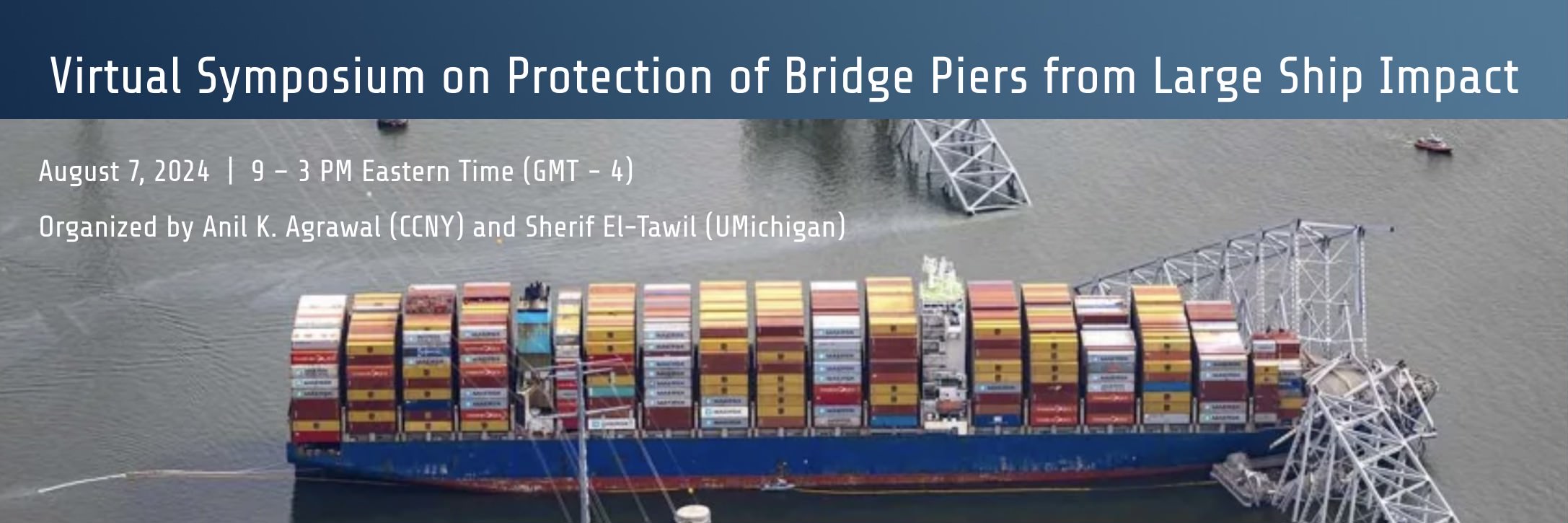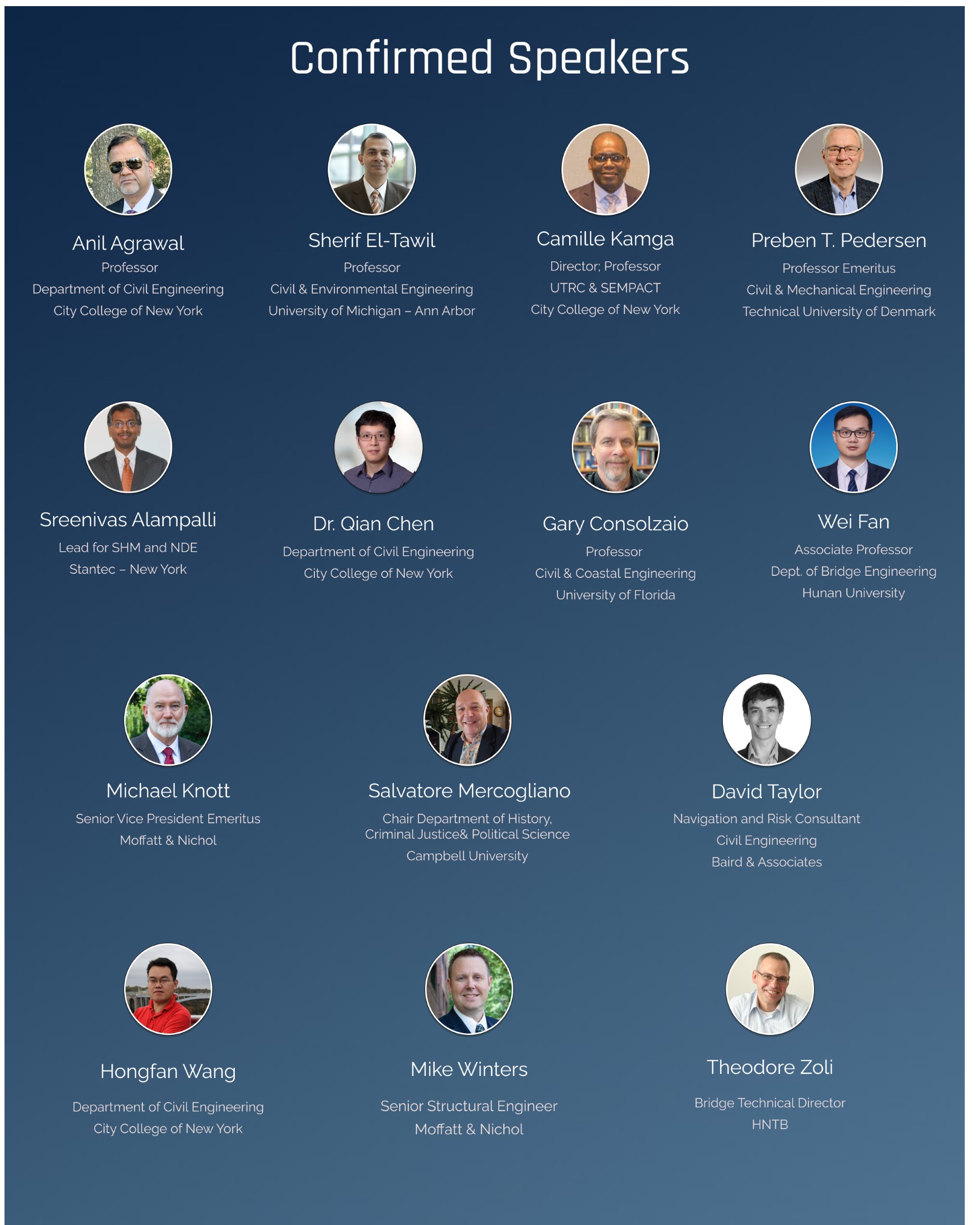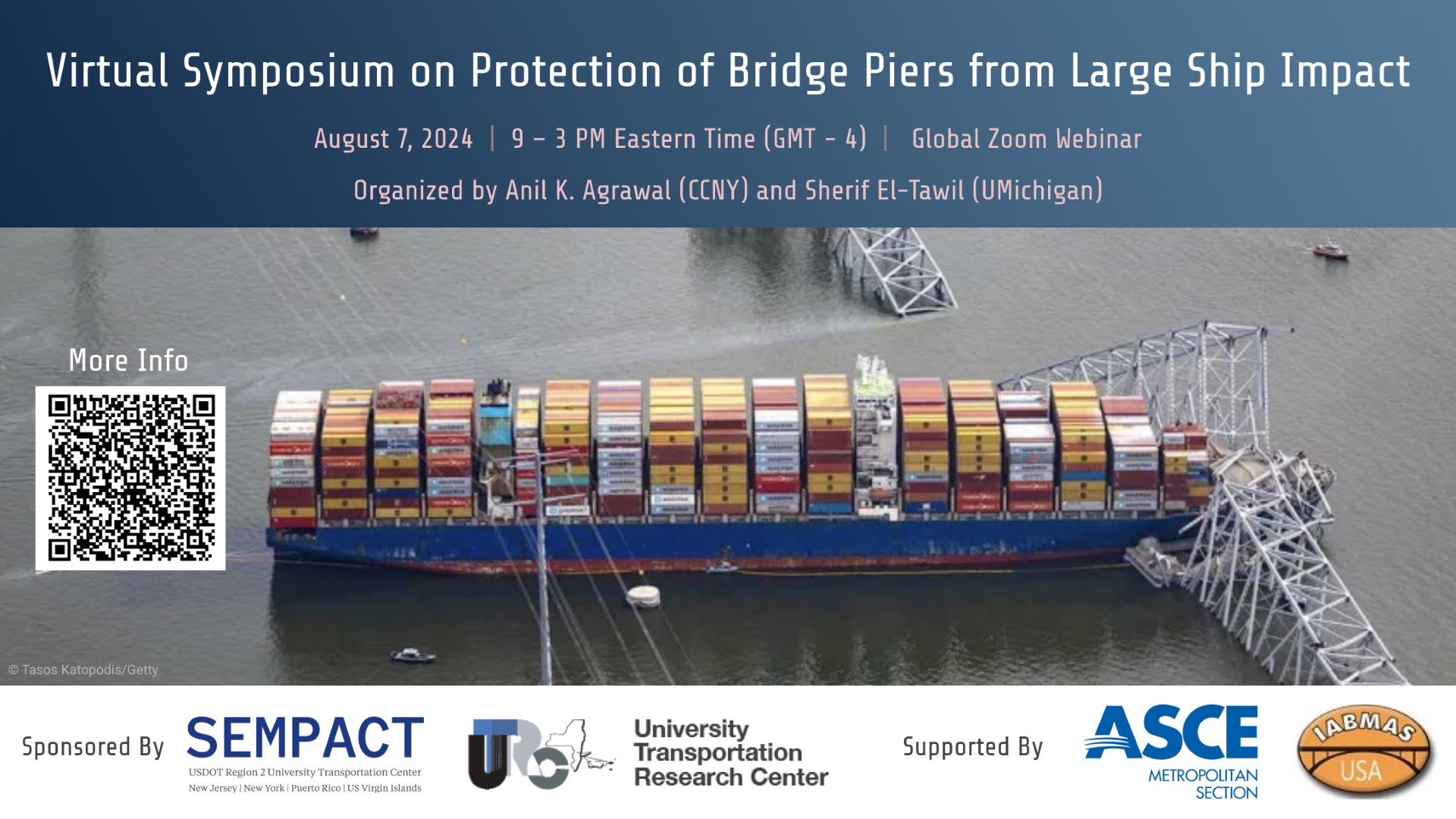
| Project | Presenter | Presentation Link |
|---|---|---|
| Introduction | Anil Agrawal (CCNY) | Watch |
| Introduction of Grove School of Engineering | Alexander Couzis (CCNY) | Watch |
| Introduction of the University Transportation Research Center / SEMPACT and Focus | Camille Kamga (CCNY) | Watch |
| Introduction of IABMAS-USA | Sreenivas Alampalli (Stantec) | Watch |
| Introduction to the Symposium and Brief History of Ship Impacts | Anil Agrawal (CCNY) | Watch |
| On the Design of Bridges Against Ship Collissions | Preben Terndrup Pedersen (DTU) | Watch |
| Shipping, Bridges, and the Future | Salvatore Mercogliano (Campbell Univ.) | Watch |
| Hunan Provincial Design Standard for Evaluation and Improvement of Vessel-Impact-Resistant Performance of Existing Bridges | Wei Fan (Hunan Univ.) | Watch |
| Insights from Automatic Identification System data on vessel collision risk to bridges | Theodore Zoli (HNTB) | Watch |
| Ship Impacts on Bridges: Computational Simulations | Sherif El-Tawil (U-Mich) | Watch |
| Ship Impacts on Bridges: AASHTO Code and Research | Gary Consolazio (University of Florida) | Watch |
| Risk Analysis of Ship Collision with Bridges | Michael Knott & Mikele Winters (Moffat & Nichol) | Watch |
| Quantitative assessment and mitigation of navigation risk for critical infrastructure: A Port Hedland case study. | David Taylor (Baird Associates) | Watch |
| Panel Discussion and Q&A | Sreenivas Alampalli (Stantec) | Watch |
| Symposium Wrapup | Anil Agrawal (CCNY) | Watch |
For registration to this symposium, please click on the link below. Once you have registered, we will send you a confirmation email about your registration and Zoom Webinar link to join the symposium. We have limited capacity for this symposium. Hence, please register as soon as possible.
Zoom Webinar Registration Link:
https://us02web.zoom.us/webinar/register/WN_6oaImYcOTLWIo6_bE716aw
The Key Bridge in Baltimore stood for more than half a century until it collapsed when a massive ship it was never designed to withstand collided with it. Ship collision design provisions, established in 1991, well after the bridge was built, suggest that the chance of collision was extremely low, estimated to be around 1/100,000. This risk assessment, which ultimately proved to be overly optimistic, likely contributed to a false sense of security about the bridge’s vulnerability and may have impeded proactive measures to reinforce the structure.
National ship collision provisions have been mostly unchanged since they were published about 35 years old. The guidelines were derived from 1970s experiments focused on protecting the reactors of nuclear-powered ships from collision by other ships. The studies utilized 1:10 scale models and were geared towards ship-to-ship impacts rather than ship-to-bridge collisions. In addition to these substantial limitations, the provisions also failed to consider the scale and impact force generated by modern, significantly larger freighters that are now in operation. Although the Key Bridge was not constructed in accordance with these later-established provisions, its collapse under conditions deemed extremely unlikely by these standards underscores the pressing need for a comprehensive reassessment and possible revision of these guidelines. This is urgently needed to support the extensive, ongoing national efforts dedicated to evaluating and mitigating the risks of vessel collisions with existing bridge infrastructure.
The objective is this virtual Symposium on August 7, 2024, from 9:00 AM to 3:00 PM eastern time is to highlight the current state of protection of piers / towers of long span bridges in navigational waters from large ship impacts and identify current needs and gaps through an interactive virtual workshop of researchers and practicing engineers.
The symposium will be free to the public and will be delivered through Zoom Webinar. While a detailed agenda will be announced a week prior to the workshop, a tentative list of presenters / speakers is outlined below.
Confirmed Speakers





